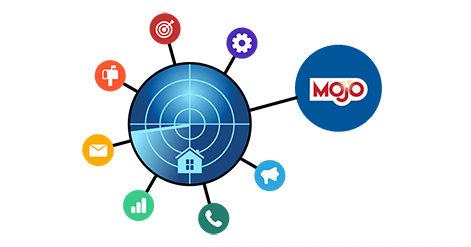7 Do's And Don'ts When Marketing To A Pre Foreclosure List

Long considered one of the best sources of motivated sellers, properties in pre foreclosure present many opportunities for real estate investors, real estate agents, and other real estate professionals alike.
In short, a property is considered to be in pre foreclosure when owners have received a notice of default, meaning they have defaulted on their mortgage payments.
While it may take considerable effort to acquire pre foreclosure properties, investors often pursue these opportunities to develop properties for below-market value. For real estate agents, pre foreclosures have long been considered one of the most effective ways to find seller leads.
|
|
Even though pre foreclosures can present opportunities for investors and real estate agents, it's important to remember that, more often than not, pre foreclosures represent a personal or financial hardship for the owner.
Therefore, it's essential to consider the Do's and Don'ts when marketing to pre foreclosure lists, including:
- Be compassionate, don't be predatory.
- Lead in softly, don't jump right into the issue of pre foreclosure.
- Know your data, don't engage without knowing the situation.
- Build rapport over a period of time, don't take a one-and-done approach.
- Interact face-to-face, don't hide behind technology.
- Use multiple marketing channels in your outreach, don't be one-dimensional.
- Make sure your data is up-to-date, don't rely on static lists.
Let's dive in…
1. Be compassionate, don't be predatory.
As mentioned above, it's important to remember that homeowners who have defaulted on their mortgage payments are going through a rough time. They're in situations they didn't account for, and their circumstances will likely be highly stressful.
If you're a real estate investor, the last thing you want to do is come in and say, "Hey, I know you're in pre foreclosure, and your hardship is my financial gain, so let me buy your house from you for far below market value as my next investment property." Put yourself in their situation - if you were in pre foreclosure, and someone you've never met knocked on your door, trying to take advantage of your circumstances, how would you react?
Instead, approaching the situation from a compassionate, neighborly standpoint will help you make a much more meaningful connection with the homeowner. For instance, if you say, "Hi, I'm an investor (or agent) in the area, and I'm looking to help people in this neighborhood. There's been a spike in the number of pre foreclosure homes, and I've heard several owners in the area going through pre foreclosure. I specialize in helping people get out of those situations, and if you know anyone like that, I'm here to help in any way I can."
The adage "you catch more bees with honey than vinegar" rings true in this case. As an investor, you'll be able to connect with a property owner much better if you start from a place of compassion. As a real estate agent, you're much more likely to find pre foreclosure listings too. Always follow the Good Neighbor Marketing Pledge to ensure you're marketing to homeowners in pre foreclosure the right way.
2. Lead in softly, don't jump right into the issue of pre foreclosure.
Similar to our first point, it's critical to properly approach the conversation with pre foreclosure leads from the onset. The general rule is to wait to acknowledge the situation directly until the homeowner decides to.
The key here is that you can still address the situation of pre foreclosure. The only difference is that you aren't immediately implying to the homeowner that you know they're in pre foreclosure.
Buying a home or property is often the most significant financial decision someone will make in their lifetime. However, it can be a very sensitive topic to come out and talk about their pre foreclosed property immediately.
Instead, leading into it by saying something like, "Hey, I'm in the area, looking to help people facing foreclosure - I've been speaking to several people who've been going through the process and have been able to help walk them through what their options are." This gives the homeowner space and time to consider the offer for themselves.
3. Know your data, don't engage without knowing the situation.
As with any sensitive situation, you'll need to ensure that you fully understand the circumstances surrounding the pre foreclosure list you're marketing to.
When you have a conversation with an owner in pre foreclosure, you'll need to walk the fine line between coming off unprepared and appearing too big-brother-esque. Having a solid understanding of the pre foreclosure process, what pre foreclosure stage the property is in, how long ago their action took place, and a few things about the neighborhood is ideal for starting a natural conversation.
You'll come off as unprepared and transactional if you try to come into a conversation without at least knowing the high-level details. Remember, the whole point is to build authentic relationships with owners from your pre foreclosure list, and you will only be able to do that by at least knowing a little bit about them.
4. Build rapport over a period of time, don't take a one-and-done approach.
At its core, marketing to a pre foreclosure list is to find pre foreclosures and create meaningful connections over a long period. In addition, of course, it's essential to be prepared to make a lasting first impression, but that's not the end goal. The best marketers know that their competition won't put in the effort to cultivate their relationships with prospects and that if they do themselves, they'll stand out from the rest.
The truth is that in a given area, there are a finite number of pre foreclosure properties at any given time which investors will all be going after. So how do you separate yourself from everyone going after the same pre foreclosure lists and communicating with prospects?
The answer: building rapport. Not stopping at the initial touch point and providing value over an extended period. Like any other service, owners from a pre foreclosure list will only engage with you if there is a level of trust. Earn their trust by following Steps 1-3 over a sustained period. Others won't do the same.
5. Interact face-to-face, don't hide behind technology.
Continuing on the theme of building trust, we now get to face-to-face interactions. It's easy to rely on technology to do the heavy lifting when communicating with pre foreclosure lists, but nothing beats in-person conversation.
We know - it can be intimidating to go door knocking. But if you think about the purest, most basic form of communication - it's face-to-face. When done correctly, door knocking builds credibility and trust and allows you to pick up on cues like body language. Reading those non-verbal cues is critical when marketing to a pre foreclosure list. Seeing how the owner reacts and assessing body language can allow you to adjust your conversation to fit the right tone/mood.
If you've been considering door knocking or Driving For Dollars, remember it's one of the most powerful and under-utilized ways to market to pre foreclosure lists. By taking the road less traveled, you'll be able to stand out from other investors or agents who choose to stay at home.
6. Use multiple marketing channels in your outreach, don't be one-dimensional
Just like you don't stop marketing to a pre foreclosure list after one outreach attempt, you don't only use one channel to get your message out. To win your next pre foreclosure sale opportunity, let's take a look at some of the best channels to connect with pre foreclosed lists:
Email: introducing yourself, your company, or your service over email is the first step in connecting with prospects on pre foreclosure lists.
Calling / Texting: once you've made contact with prospects on your pre foreclosure lists, following up with calls and texts is a great way to build rapport with anyone who's opted into receiving phone communication.
Direct Mail: any form of a physical piece of marketing or promotional material sent through the mail. You can connect with pre foreclosure lists with postcards, letters, brochures, etc.
Door Knocking: Door knocking is a direct approach you can use once you've identified prospects on your pre foreclosure list. You can approach the property, talk to owners and neighbors, and learn more about the property and the property owners.
Online Ads: Search, and Social Media ads are a great way to spread awareness. A huge benefit is an ability to control how much or how little you spend per day.
7. Make sure your data is up-to-date, don't rely on static lists.
Picture this. You bought a pre foreclosure list six months ago. It was touted as having the most accurate, complete data, and you pulled the trigger. Your list started great - the property information was correct, owner data was solid, and you were having great conversations. All good, right?
Fast forward to today. A quarter of the pre-built list you bought has become current on their payments. Another third of the list is no longer in their house. The rest you've exhausted with communication.
What do you do now?
This situation happens across the board and can leave investors and agents stuck with a worthless pre foreclosure list. That's why we recommend ensuring you have a list builder that keeps your data up-to-date and is consistently monitoring for new opportunities. A static list of pre foreclosure properties (like the example we just showed) is a snapshot in time, giving you a record of data from 6 months or more ago.
So, instead of buying the same lead lists as everyone else and likely getting the same results, use a powerful pre-foreclosure list builder to find people more likely to become your next customers.
Want to learn more about foreclosures and the investing process?
|
Check Out The Complete Guide to Foreclosure Investing |
Build Your Own Pre Foreclosure List Today with Your Free Trial of PropertyRadar!


